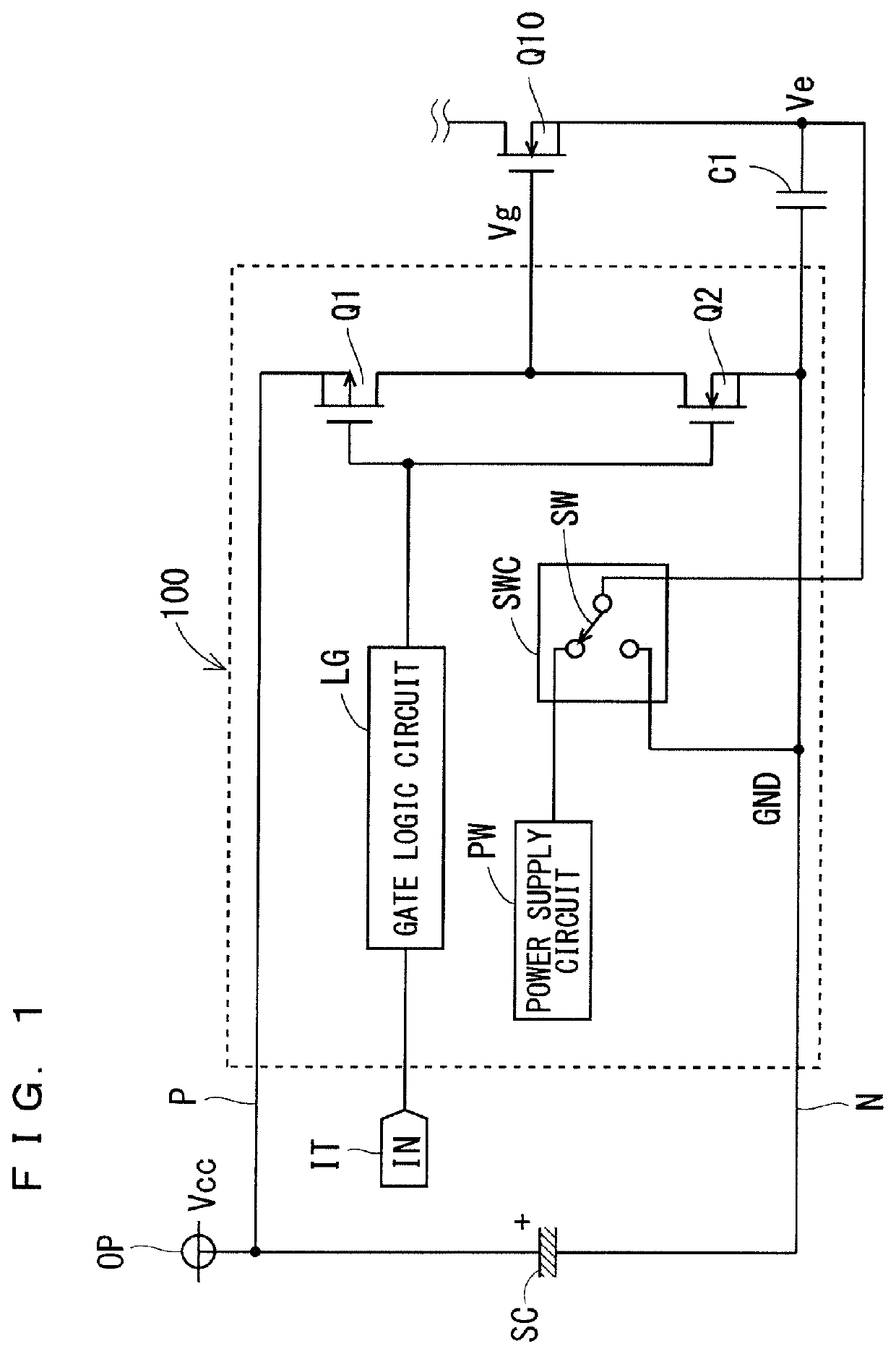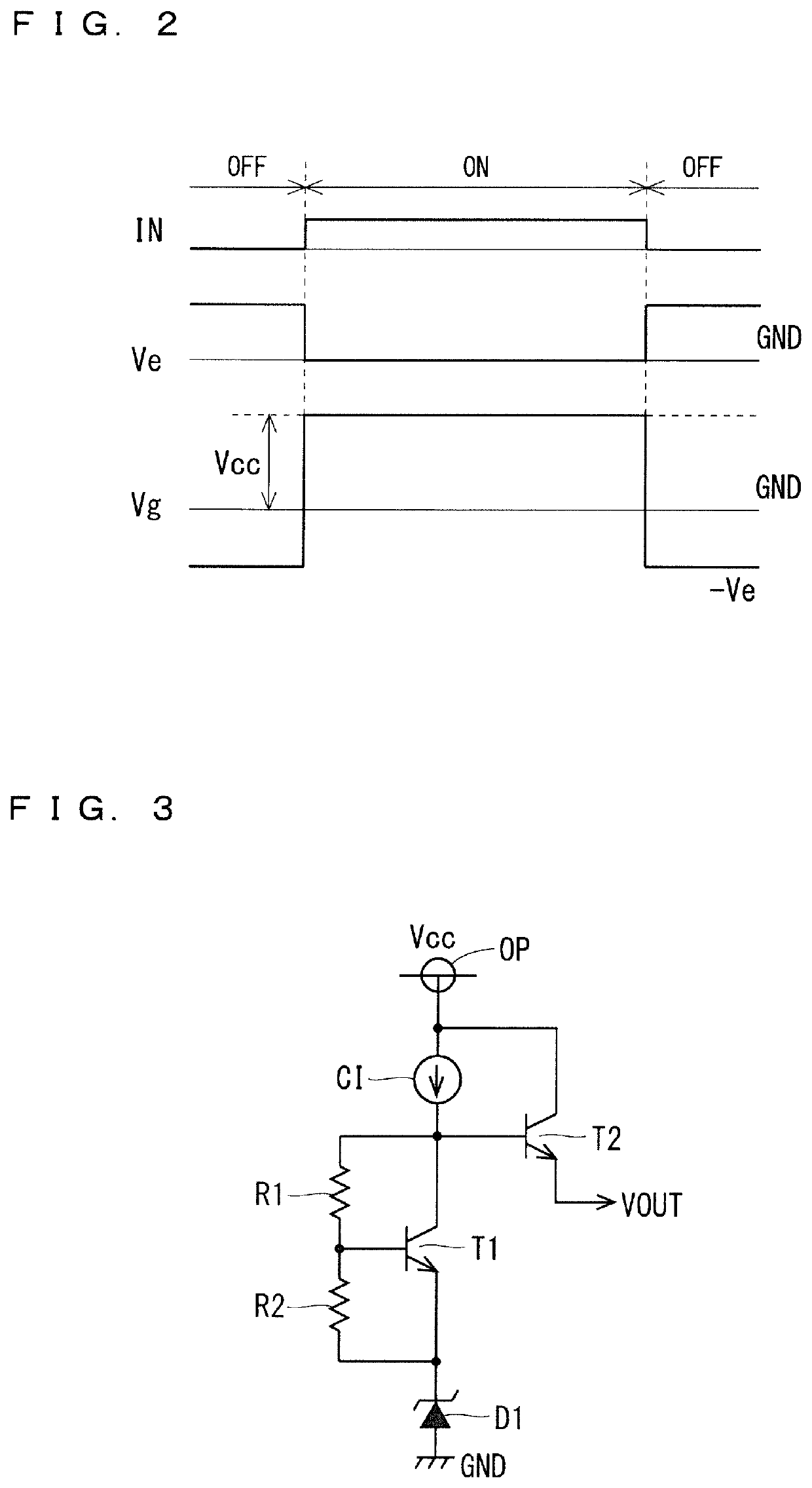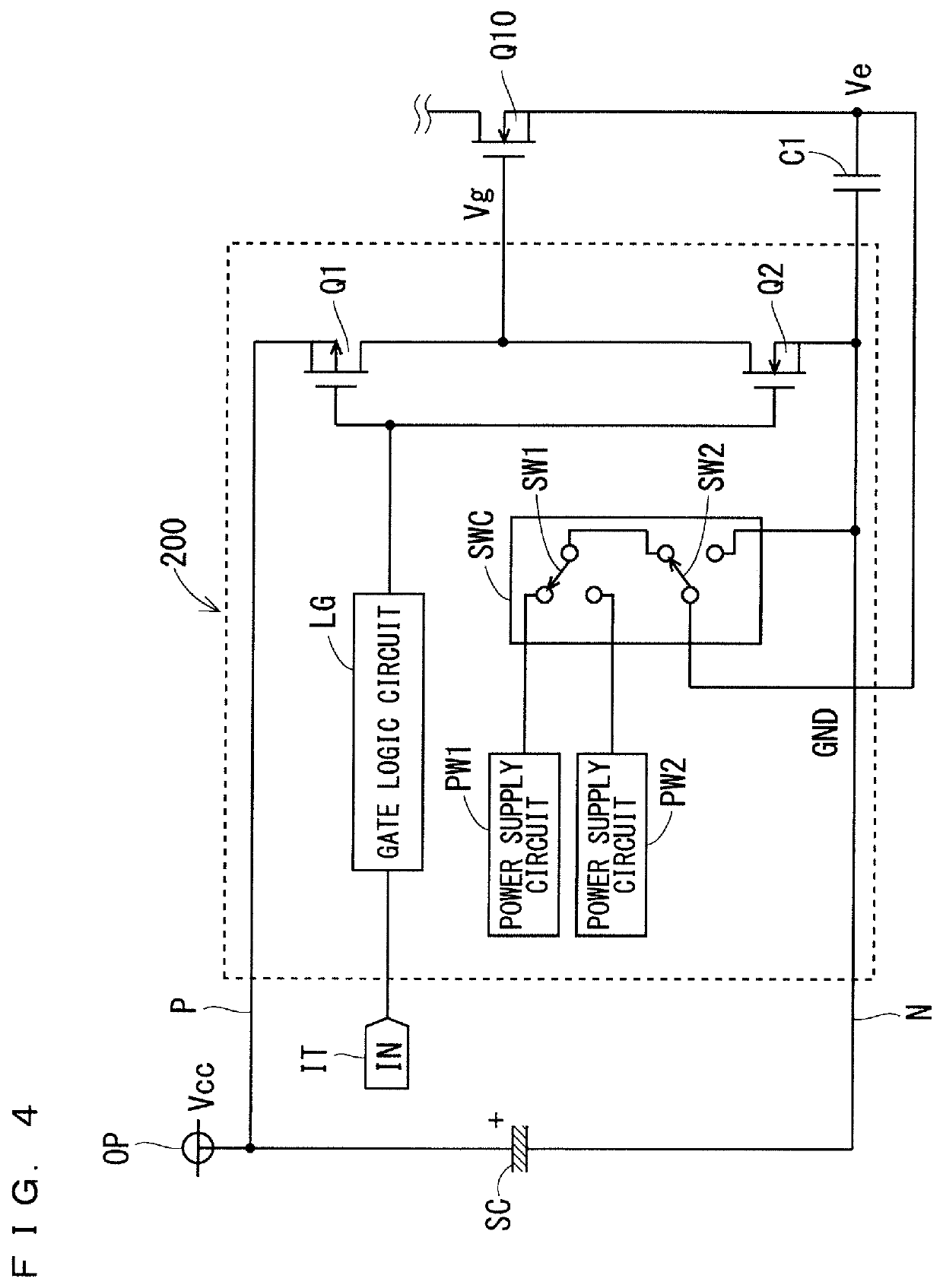Gate driver and semiconductor module
a technology of gate driver and semiconductor module, which is applied in the direction of power conversion system, pulse technique, electronic switching, etc., can solve the problems of high design load, inability to secure desired voltage and current, and increased cost or improvement of power supply quality, etc., and achieve the effect of reducing the design load
- Summary
- Abstract
- Description
- Claims
- Application Information
AI Technical Summary
Benefits of technology
Problems solved by technology
Method used
Image
Examples
embodiment 1
[0016]FIG. 1 is a circuit diagram illustrating a configuration of a gate driver according to Embodiment 1 of the present invention. As illustrated in FIG. 1, the gate driver 100 is a gate driver that drives an n-channel MOS transistor Q10 that is a power device, and is configured as an integrated circuit (IC).
[0017]The gate driver 100 includes a power supply line P (first power supply line) to which a voltage Vcc (first potential) is supplied from a power supply terminal OP, and a p-channel type MOS transistor Q1 (first transistor) and an n-channel type transistor Q2 (second transistor) connected in series with the ground line N (second power supply line) of the ground potential (second potential). The MOS transistors Q1 and Q2 operate in a complementary manner, and the connection node between the MOS transistor Q1 and the MOS transistor Q2 serves as an output node of the gate driver 100, from which a gate signal is output and the signal is input to the gate of the MOS transistor Q1...
embodiment 2
[0039]FIG. 4 is a circuit diagram illustrating a configuration of a gate driver 200 according to Embodiment 2 of the present invention. It should be noted that, in FIG. 4, the same components as those of the gate driver 100 described with reference to FIG. 1 are denoted with the same reference numerals, and overlapping descriptions are omitted.
[0040]As illustrated in FIG. 4, the gate driver 200 includes power supply circuits PW1 and PW2 and a switching circuit SWC for switching output destinations of the power supply circuits PW1 and PW2. The power supply circuits PW1 and PW2 are negative bias power supplies, and each output is connected to two nodes of the switch SW1 in the switching circuit SWC, respectively.
[0041]The switches SW1 and SW2 switch the outputs of power supply circuits PW1 and PW2 to connect either to the source of MOS transistor Q10 or to ground (GND). The switching circuit SWC controls the switch SW1 to switch from the output of the power supply circuit PW1 to the o...
embodiment 3
[0047]The gate driver 100 and the gate driver 200 of Embodiments 1 and 2 described above can be mounted on a semiconductor module as a driver IC.
[0048]FIG. 6 is a partial plan view illustrating an inner configuration of a semiconductor module 1000 according to Embodiment 3 of the present invention. As illustrated in FIG. 6, the semiconductor module 1000 is a module packaged with the MOS transistor Q10 using the gate driver 100 or the gate driver 200 as the gate driver GD. Note that in FIG. 6, the sealing resin and the like are not illustrated for convenience, but a package region PG sealed with the sealing resin is surrounded by a broken line, and outside this region is outside the module.
[0049]As illustrated in FIG. 6, the semiconductor module 1000 is a module in which three MOS transistors Q10 are packaged. The three MOS transistors Q10 are modules that are connected in parallel to each other at a portion that is not illustrated in the drawing to obtain a large output current. Not...
PUM
 Login to View More
Login to View More Abstract
Description
Claims
Application Information
 Login to View More
Login to View More - R&D
- Intellectual Property
- Life Sciences
- Materials
- Tech Scout
- Unparalleled Data Quality
- Higher Quality Content
- 60% Fewer Hallucinations
Browse by: Latest US Patents, China's latest patents, Technical Efficacy Thesaurus, Application Domain, Technology Topic, Popular Technical Reports.
© 2025 PatSnap. All rights reserved.Legal|Privacy policy|Modern Slavery Act Transparency Statement|Sitemap|About US| Contact US: help@patsnap.com



